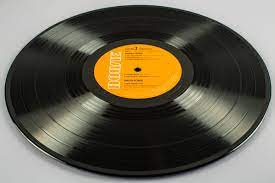When it comes to technology, people cling on to some old technology because of their fondness for it either because it represents their youth or because they don’t want to change with the times.
I laugh at how many new albums (I still like to use that term) are not only released in digital format, but CDs, and records. I have never been an audiophile and never will be, I’ll never understand why my father’s business partner had to travel to England to get a digital audio tape recorder (it was banned here for copyright issues). But I grew up as a child in the 1970’s and I hated records. They were too big, they were hard to play, and they scratched too easily. Same with VHS, give me Blu-Ray. My $2,000 ($2,000 in 1985 money) Apple IIe was no match for my $800 HP laptop.
When it comes to retirement plans, we do have one retirement plan for the single employer market that is sort of like a record or a VHS tape and that’s a money purchase plan. Money purchase plan is a defined contribution plan that is also a pension plan, so it has a specified contribution in the plan that has to be made every year. For multi-employer (union) plans or some governmental plans, money purchase plans are alive and well as they have replaced defined benefit plans. For single employers, money purchase plans were made obsolete in 2002 when the Internal Revenue Code was amended to increase the deductibility limits on profit sharing and 401(k) plans.
Prior to 2002, the limit on contributions that plan sponsors could deduct on their tax returns was 15% of compensation for profit-sharing and 401(k) plans (which are profit-sharing plans). That 15% limit did actually include salary deferrals (which made no sense since it was employee money). The deductibility limit for money purchase plans was 25% of compensation. So plan sponsors had a money purchase plan for the full 25% limit (or higher than 15%, whatever they could afford) or they had paired plans such as a money purchase plan for a 10% contribution of compensation and a 15% discretionary contribution under a profit-sharing plan.
As soon as EGTRRA changed the limits in 2002 and allowed for 25% deduction limits (which no longer included salary deferrals), I remember merging the money purchase plan into the paired profit-sharing plan or converting the stand-alone money purchase plan into a profit-sharing plan for our clients.
So the point is that unless the plan is designed to benefit union employees or because there are some contractually mandated money purchase plan contributions, I can’t find a reason why employers would keep them, especially if they sponsored both a money purchase and a profit-sharing plan. Perhaps some plan sponsors have multiple plans to benefit different groups of employees (many law firms do that), but there is no reason why a money purchase plan shouldn’t be converted into a profit-sharing plan.
I came across one plan sponsor with a money purchase, profit sharing, and 401(k) plan, all benefiting the same group of employees. What was really apparent to me is that they
had a third-party administrator(TPA) who thought it was more economical for the TPA for the plan sponsor to have 3 plans, instead of just one.
So I would advise plan sponsors to look at money purchase plans that they may still have, as well as financial advisors to look at prospective clients that have. Perhaps there is a legitimate reason to still have a money purchase plan, but perhaps not.







